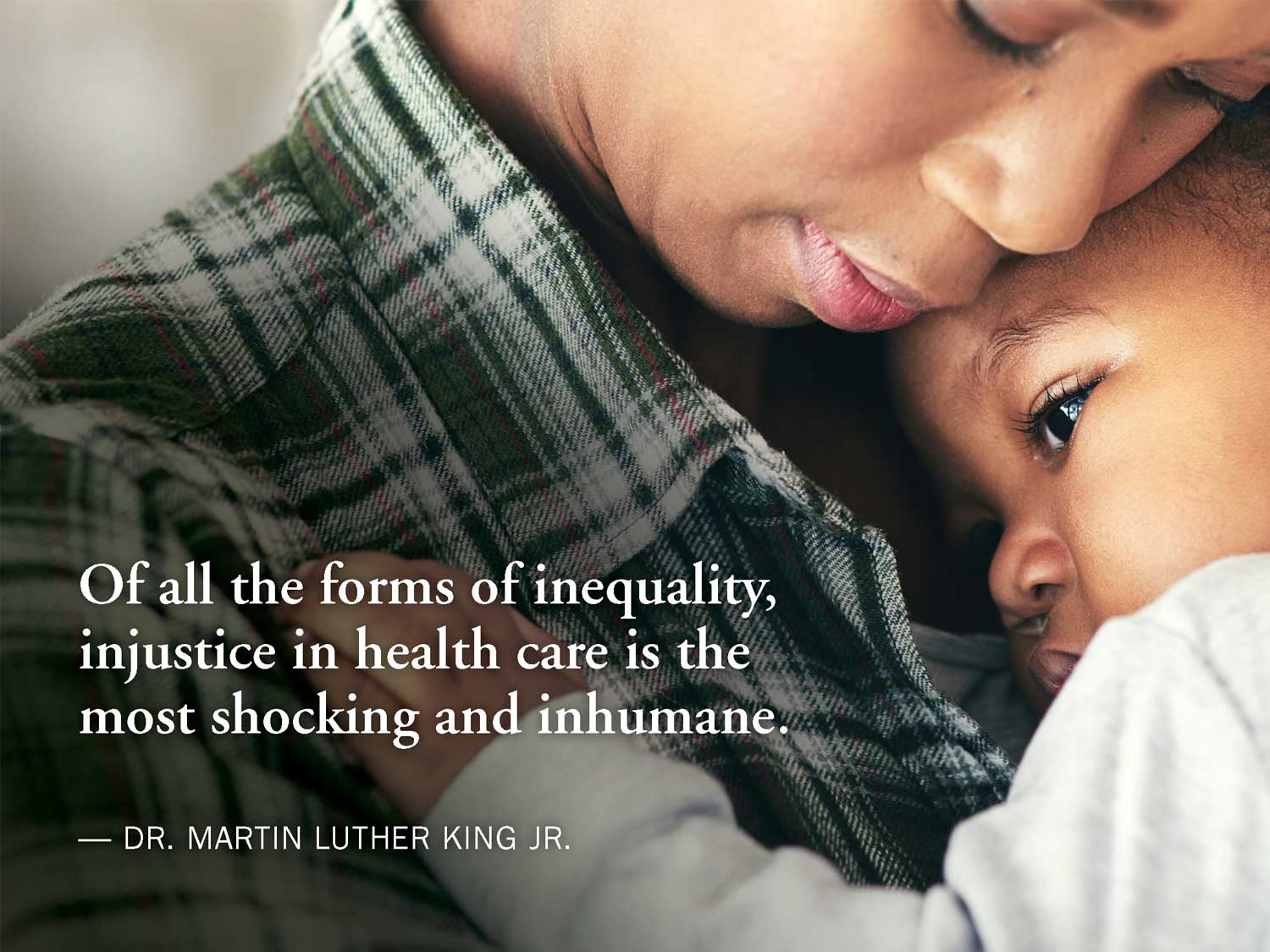Diversity Resources
The Catholic Health Association and the Catholic health care ministry are committed to diversity — both in the workforce and in meeting the needs of diverse patients. CHA is a co-founder of the Institute for Diversity and Health Equity and continues to work closely on its initiatives. CHA has a Special Committee on Diversity that addresses the issue and the CHA Board of Trustees approved several recommendations from the committee in 2005. Those recommendations reaffirm our commitment to expanding representation of historically underrepresented groups in health care, on the board, and on board and administrative committees, and on staff. CHA additionally addresses the issue through advocacy and education.
- NAHSE (The National Association of Health Services Executives)
- DiversityInc.
- HRET.org (Health Research & Educational Trust)
- National Institute on Minority Health and Health Disparities
- The Office of Minority Health
- National Academy of Medicine (formerly the Institute of Medicine)
- Institute for Diversity and Health Equity
- Kaiser Family Foundation
- EthnoMed
- The Conference Board
- Critical Measures
Disparities Resources
Disparities and Related Content Websites
- Race, Racism and Health (Robert Woods Johnson Foundation)
- Centers for Disease Control and Prevention — Minority Health page
- Institute of Medicine of the National Academies
- Kaiser Family Foundation — Minority Health
- National Cancer Institute Center to Reduce Cancer Health Disparities
- National Minority Health Month
- County Health Rankings
Reports and Resources
- Actively Addressing Social Determinants of Health will Help Us Achieve Health Equity
A new blog post by Cara V. James, PhD, Director CMS Office of Minority Health, discusses CMS’ work on addressing social determinants of health, a key step towards achieving health equity. Dr. James’ post includes links for information about ICD-10 codes on socioeconomic and/or psychosocial needs; the Accountable Health Communities (AHC) Health-Related Social Needs Screening Too; the PRAPARE tool (Protocol for Responding to and Assessing Patients' Assets, Risks, and Experiences) and the Health Leads Screening Toolkit. - The discharge process is a key element in both achieving patient health and preventing hospital readmissions.
- Race Equity and Inclusion Action Guide - Embracing Equity: 7 Steps to Advance and Embed Race Equity and Inclusion Within Your Organization, The Annie E. Casey Foundation
- Racial and Ethnic Disparities in Access to and Utilization of Care among Insured Adults, Kaiser Family Foundation
- The State of Health Equity Research: Closing Knowledge Gaps to Address Inequities, report and inforgraphics by the AAMC and AcademyHealth
- Network Adequacy and Health Equity: Improving Private Health Insurance Provider Networks for Communities of Color, a report from Families USA
- HHS Action Plan to Reduce Racial and Ethnic Health Disparities
- New Policy Brief Explores Racial and Ethnic Disparities in Health and Health Care, Robert Wood Johnson Foundation
- CDC's First Periodic Health Disparities & Inequalities Report — United States, 2011
- AHRQ National Healthcare Disparities Report
- Free CDC brochures and handouts
- Kaiser Family Foundation Issue brief on Health Reform and Communities of Color: Implications for Racial and Ethnic Health Disparities
- What is a Health Disparity?
- Moving toward Health Equity: Health Reform Creates a Foundation for Eliminating Disparities
Chartbook on Health Care for Blacks – National Healthcare Quality and Disparities Report
The Agency for Healthcare Research and Quality (AHRQ) has released a Chartbook on Health Care for Blacks, derived from the National Healthcare Quality and Disparities Report, which summarizes trends in health care disparities by race related to access, Heckler Report priorities, and National Quality Strategy priorities. Key findings include increases in suicide and mental health disparities, improvements in access to care since the Affordable Care Act, and poorer quality of care related to person-centeredness and care coordination.» Download the free report and slide deck


.jpg?sfvrsn=29294c48_1)
.jpg?sfvrsn=310370b8_2)